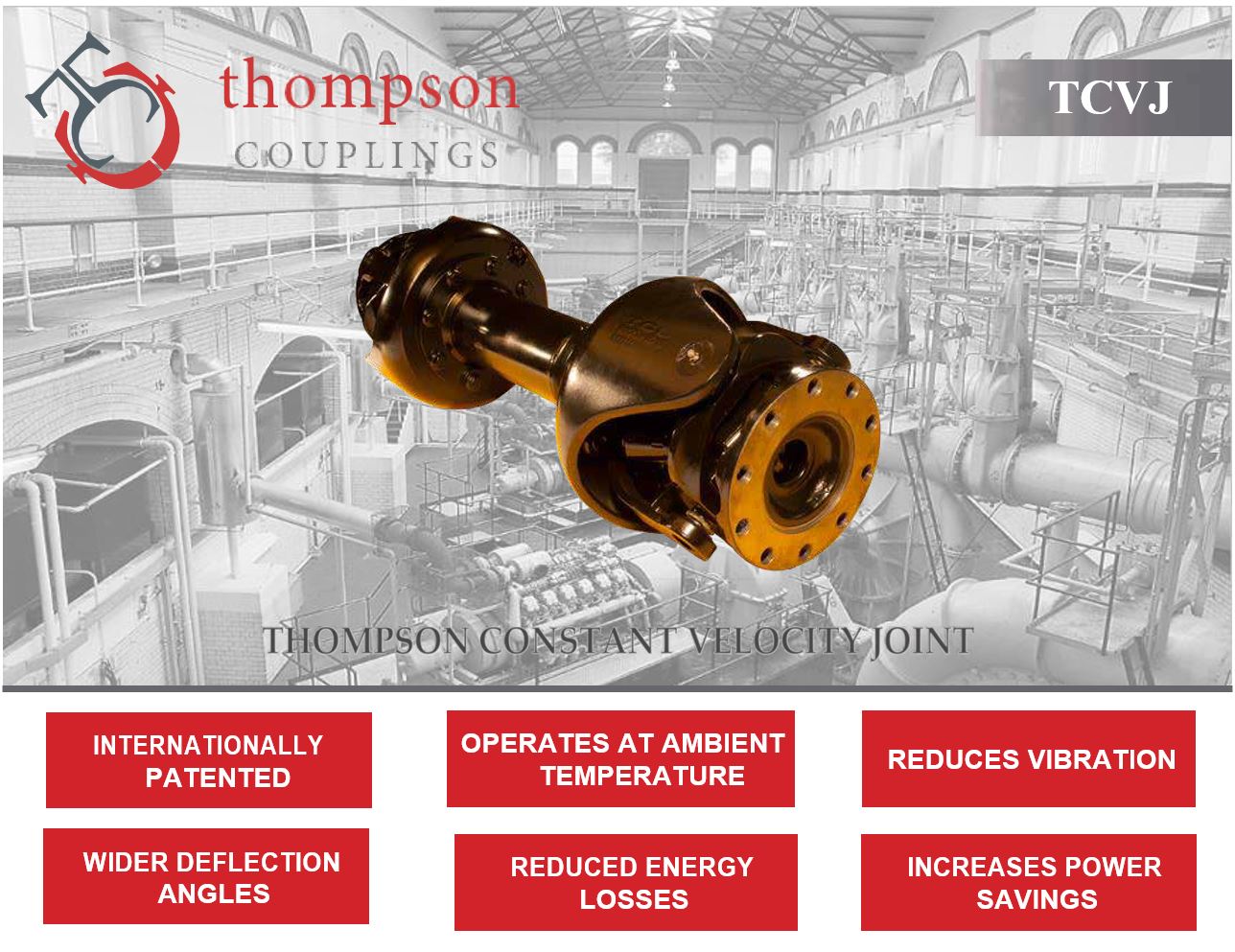Thompson Constant Velocity Joint
Benefits
- Reduced friction, heat, wear, vibration and collateral damage
- Full load continuous operation at high output shaft angles
- Reduced energy losses
- Facilitates new designs with higher output shaft angles
- Runs at near to ambient temperature - durability
Capabilities
A true constant velocity joint with no load bearing sliding surfaces that currently operates at angles to 20 degrees with special designs to 45 degrees.
The Thompson Constant Velocity Joint (TCVJ) is a means of transmitting drive across an angled joint between driving and driven shafts with a true one-to-one ratio between the shafts.
The traditional problems associated with driving power around a corner of heat, vibration, loss of power and oscillating shaft speeds that have been inherent in universal joint technologies have all been addressed and overcome by the TCVJ.
Running at near to ambient temperatures, with no inherent vibration in its design, the TCVJ and its associated sliding shaft actually reduces vibrational inputs from gearboxes, reduction units and motors in a way that protects and prolongs the life of the system. Having no weight bearing sliding elements, the TCVJ has been born out of a re-understanding of the vectoring forces in play in rotating shafts and directional changes.
Made from forged and cast elements, the TCVJ design is scalable, meeting the differing needs of industry sectors - such as marine, industrial, transport and agriculture.
The TCVJ is the first of its type in the world, and is registered with the relevant patent authorities worldwide (USA, China, Europe, Japan, India, Russia, Israel, Brazil, Australia, Indonesia, South Korea, Singapore, Mexico, South Africa, Vietnam, Philippines, Canada)

The graph above illustrates the difference in output motion of a universal joint (non-constant velocity) and a Thompson Coupling showing true constant velocity. The resultant non-constant velocity motion in traditional couplings produces shaft vibration and additional driveline forces causing increased wear and reliability issues for the power system.


